An Antiques Roadshow guest takes an expert’s breath away with an ‘absolutely superb’ item never seen on the show before – which turned out to be worth a life-changing sum.
A rediscovered episode of the BBC show from 2016 sees presenter Fiona Bruce, 61, and the experts head to Scarborough Grand Spa Hall on the North Yorkshire coast.
The specialist appraisers met with guests to value their family heirlooms and heritage items – with expert Ronnie Archer Morgan, 75, taken aback by one in particular.
He spoke to a woman who had brought in a Polynesian, club-like tribal weapon for evaluation – which was unlike anything he had seen on the programme before.
Ronnie, an expert in tribal art and weaponry, opened by asking: ‘What’s a feminine person like you doing with a big, heavy, aggressive thing like this?’
She explained: ‘Well, it belongs to my dad actually, it’s not mine, and it was passed down to him by his dad who acquired it through some elderly spinster ladies who gave it to him.

An Antiques Roadshow guest (pictured) ‘takes the expert’s breath away’ with an ‘absolutely superb’ item never seen on the show before – which is worth a life-changing sum
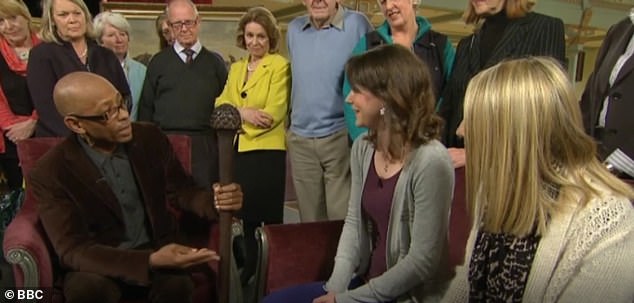
The specialist appraisers met with guests to value their family heirlooms and heritage items – with expert Ronnie Archer Morgan (left), 75, taken aback by one in particular
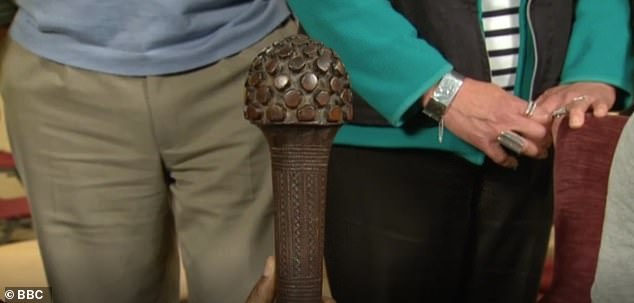
He spoke to a woman who had brought in a Polynesian, club-like tribal weapon (pictured) for evaluation – which was unlike anything he had seen on the programme before
‘He was a solicitor in Scarborough town so that’s how but I don’t know anything more.’
The slightly unclear origins of the item did not matter to Ronnie – who was just floored by its quality.
He exclaimed: ‘Amazing. I can’t actually believe what I’m looking at. This is absolutely superb.
‘It’s a Fijian Bulibuli and this is a thing of rare beauty. It is really what us collectors look for. This is the best I’ve ever seen.’
This type of weapon from the South Pacific island nation typically has a straight, long handle with a rounded head and protruding decorative circles on it.
The guest’s item was completely textbook, with raised carved studs. She responded, incredulous, to Ronnie’s praise for it: ‘Really? Wow!’
The expert explained the grisly way such weapons have been used over the years: ‘It is for caving in skulls, of course, and it would do that with some ferocity.
‘And actually, they’ve often found people’s skulls on these islands in Fiji and Tonga and places like that and the skulls are caved in and it’s not surprising, is it?’

He exclaimed: ‘Amazing. I can’t actually believe what I’m looking at. This is absolutely superb’
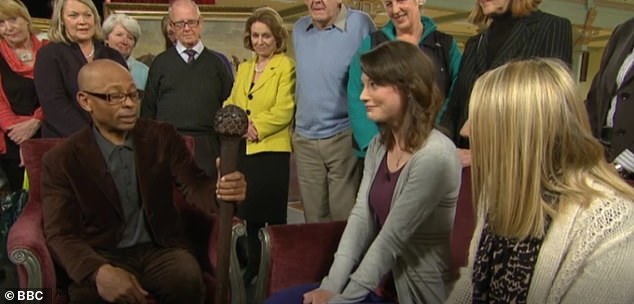
Ronnie continued: ‘It’s a Fijian Bulibuli and this is a thing of rare beauty. It is really what us collectors look for. This is the best I’ve ever seen’
He predicted the handle, in particular, was likely from the 18th or early 19th century – and boasted unique features compared other clubs of this kind.
It was made from chip-carved iron wood, which describes a kind of hand cutting technique of very hard, dense wood.
‘The chip carving goes all the way down the shaft. I’ve only ever seen them with plain shafts so this one is as good as it gets’, Ronnie said.
‘The colour is superb and the colour would have been as important to the owner as, say, the colour of someone’s tie today.
‘It said who the tribesman was. It’s a prestige object as well as a weapon.
‘The man who owned this would have carried it with a swagger. It said who he was.’
It was much bigger than the typical club, Ronnie explained: ‘I’ve never seen one this long either.
‘Normally, they are a good six, seven, eight inches shorter than this.’
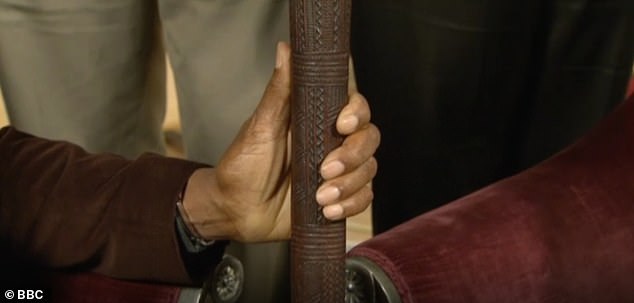
He predicted the handle (pictured), in particular, was likely from the 18th or early 19th century – and boasted unique features compared other clubs of this kind
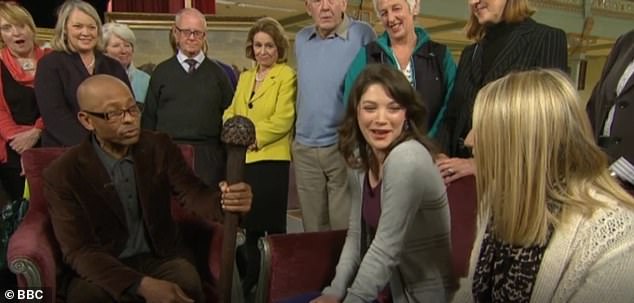
Ronnie had massively built up the anticipation ahead of the all-important valuation – and it did not disappoint
All of these amazing features had the expert absolutely awestruck and speaking in the strongest terms: ‘It just takes my breath away.
‘I’m really beside myself with excitement. I just want to throw my collection away, that’s the truth of the matter.
‘I know some dealers that had one and they thought it was the best thing they ever had and it was half as good as this and I’m not joking.
‘Did you have any idea what a rare thing this – how did it find its way from the middle of the Pacific to Scarborough? It’s just unbelievable.’
Ronnie had massively built up the anticipation ahead of the all-important valuation – and it did not disappoint.
‘And with an unbelievable object comes an unbelievable price’, he said.
‘I’m thinking about this. The market for this sort of thing is more in Paris or in Brussels and in New York.
‘But they get very excited and they’ve got galleries that deal in this sort of stuff and a nice one of these would probably be £8,000 to £10,000.’

The guest, eyes wide, was astonished by the first sum Ronnie mentioned – but he was not done yet

The woman was blown away by the prospect of such a life-changing sum: ‘Wow! That’s amazing!’
The guest, eyes wide, was astonished by this – but Ronnie was not done yet.
‘This, I would stick my neck out and say if you had to buy this from the Sablon [antiques market] in Brussels, I think it would cost you between £30,000 and maybe £35,000.
‘I really think it could make that.’
The woman was blown away by the prospect of such a life-changing sum: ‘Wow! That’s amazing!’
Ronnie could not help but continue to be effusive about the historic object: ‘It is the best I’ve ever seen and I really mean that. I can only dream.’
The owner responded: ‘Oh, I’m so happy. My dad’s going to be absolutely thrilled. That’s fantastic. Thank you so much.’
It comes after another guest, on a more recent episode of the show, learnt from Ronnie their items were also worth a huge sum – after they had nearly been thrown away.
The man, speaking from Clissold Park in London’s Stoke Newington area, explained he found them five years ago when he came across some builders throwing things away.
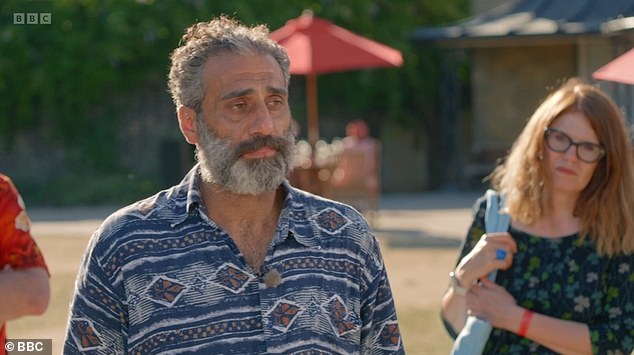
It comes after another guest (pictured), on a more recent episode of the show, learnt from Ronnie their items were also worth a huge sum – after they had nearly been thrown away
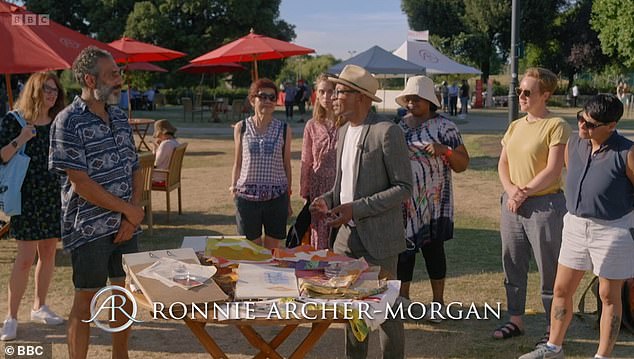
The man, speaking from Clissold Park in London’s Stoke Newington area (pictured), explained he found them five years ago when he came across some builders throwing things away
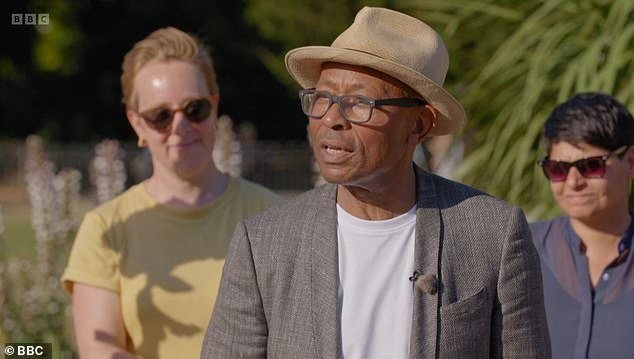
He said: ‘I was a cheeky chappie, asked them if I could have a look, buy some bits and bobs, done a deal’. Pictured: Expert Ronnie
He said: ‘I was a cheeky chappie, asked them if I could have a look, buy some bits and bobs, done a deal.’
It was then he acquired an archive collection of vibrant fabrics made by pioneer artist Althea McNish.
Althea immigrated to the UK from Trinidad and Tobago in 1951, soon calling London her new home.
After graduating university in 1957, the designer received her first commission from fashion brand Dior, setting her up on a path to success.
She worked for a number of famous clients over the years, even designing Queen Elizabeth II’s wardrobe for her royal visit to Trinidad.
Althea passed away in 2020 at the age of 95.
Speaking about the renowned artist, Ronnie said: ‘She was probably the most influential post-war textile designer that Britain has seen.
‘She brought the colour and the vibrancy of Trinidad to the shores of post-war Britain and at a time when we really needed colour here.’
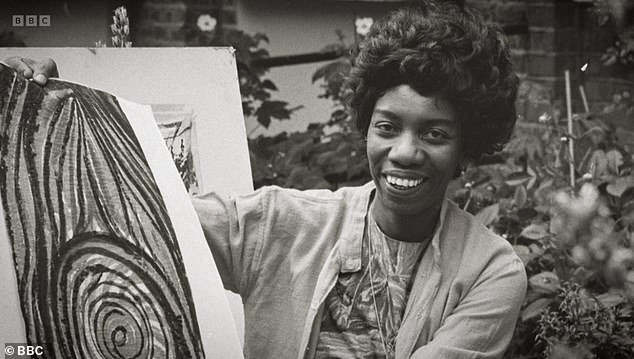
It was then he acquired an archive collection of vibrant fabrics made by pioneer artist Althea McNish (pictured)
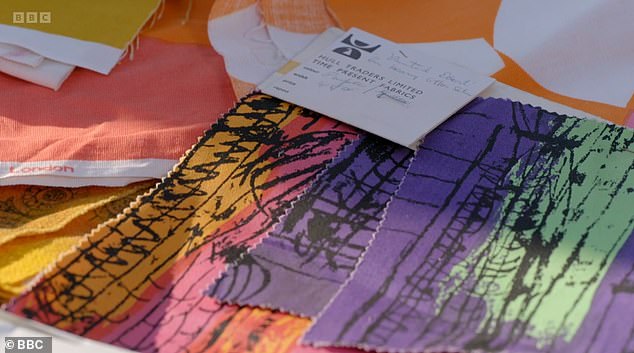
Althea immigrated to the UK from Trinidad and Tobago in 1951, soon calling London her new home
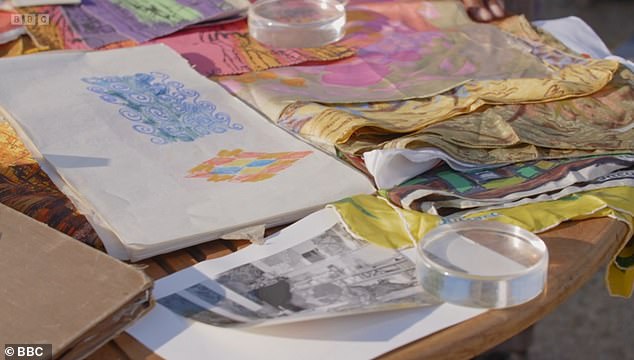
The guest also had pages of her designs, still boasting their bright colours despite being five decades old
He added Althea worked variously for iconic department store Liberty as well as fabric company Danasco.
The guest also had pages of her designs, still boasting their bright colours despite being five decades old.
When it came to the all important valuation, Ronnie started by saying some of her designs could fetch £2,500 per square meter.
Cautioning it would all need to be calculated, he then said: ‘I think this archive and what you’ve brought to us here is worth in excess of £250,000.’
The contributor, clearly blown away by the figure, remarked: ‘That’s blown me away.
‘It’s just been an incredible journey of learning and knowledge, I’ve loved every minute.’
Antiques Roadshow is available to watch and to stream on BBC One and BBC iPlayer.











